The Scottish Kilt: A cut above the rest.. and the knee!
When you think about Scottish traditions, I think it’s safe to say that the Scottish kilt would be one of the very first to spring to mind. But do you know why the distinctive tartan item is the staple of a good Scot’s wedding, where it originated from or what the different colours and patterns represent? Most importantly, do you know what accessories to style your Scottish kilt with so that you can blend in up in the Highlands?
We have endeavoured to answer all these questions and more, just read on to find out…
The History of the Scottish Kilt
The first record of the Scottish kilt is from the 16th century, and this was the great kilt, the breacan or belted plaid, which was a full-length garment whose upper half could be worn as a cloak, pulled up over the head or draped around the shoulder.
Prior to the development of the Kilt as we know it today, there was an item of clothing known as a “brat” or woollen cloak (also known as a plaid) which was worn over a tunic. This earlier cloak may have been plain in colour or in various check or tartan designs, depending on the wealth of the wearer. Over the course of the 16th century, as wool became more readily available, this cloak grew to such a size that it began to be gathered up and belted, and this was the beginning of the great kilt.
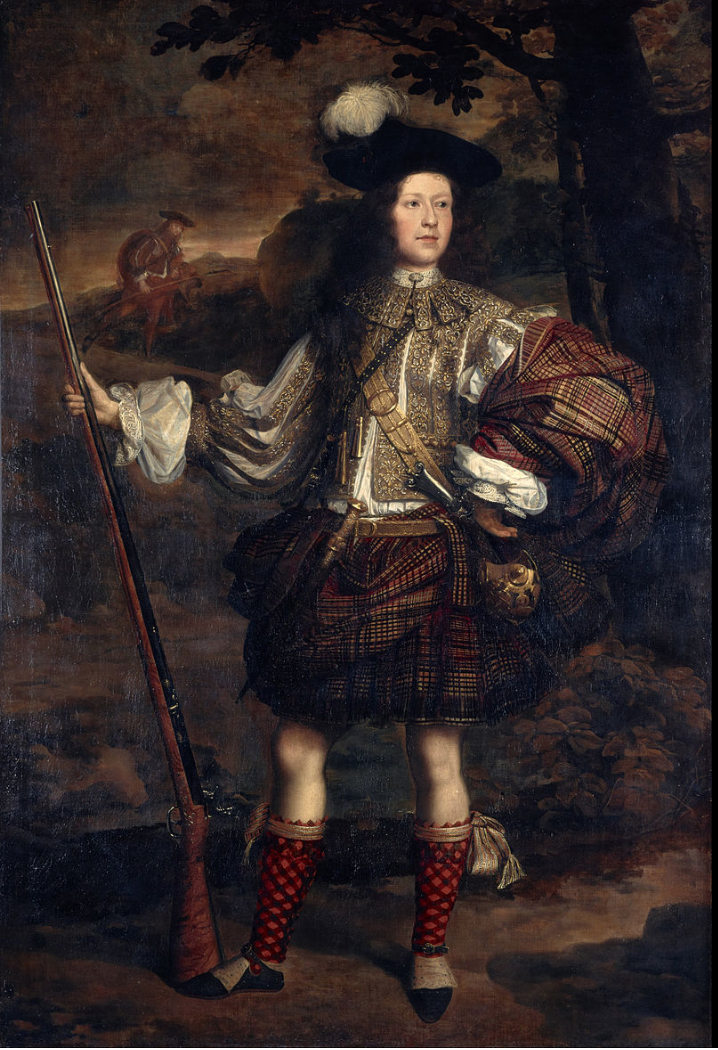
These early Scottish kilts were multi-purpose; they provided excellent protection from the weather and elements, they served to cover and guard weapons such as muskets worn about the person, they could be removed and used as a camping blanket, and they served as a marker of wealth and status depending on their size and material.
“The garb is certainly very loose, and fits men inured to it to go through great fatigues, to make very quick marches, to bear out against the inclemency of the weather, to wade through rivers, and shelter in huts, woods, and rocks upon occasion; which men dressed in the low country garb could not possibly endure.”
Description from 1746.
This type of kilt was still in widespread use until the 19th century, and in fact, there are those who still sport one today, although usually just as formal wear. But it was sometime in the late 17th or early 18th century that the small kilt started to come into use. The small kilt is a development from the great kilt, being essentially its bottom half, using a single width of cloth worn hanging down below the belt.
It was around this time that Highlanders reported the great kilt to be too “cumbrous and unwieldy” for their work and in battle, and so the equally distinct small kilt was developed, to be made of the lower half of the belted plaid with the pleats already sewn in.
The tailored kilt was adopted by the Highland regiments of the British Army, and the military kilt and its formalised accessories passed into civilian usage during the early 19th century and have remained popular ever since.
Scottish Tartan
One of the most-distinctive features of the authentic Scottish kilt is its tartan pattern, which is also known as the sett.
Particular tartan patterns are associated with individual clans and families, a tradition that can be traced back only one or two centuries. Prior to this, Highland tartans held regional associations rather than being a symbol of a particular clan. The system of named tartans as it is known today began to be recorded by the weaving companies in the 19th-century Victorian era.
In the modern-day there are also tartans for districts, counties, societies and corporations, as well as setts for states and provinces; schools and universities; sporting activities; individuals; and also commemorative and simple generic patterns that anybody can wear.
Tartans originated in woven wool, but now they are made in many other materials, and are patterned cloths consisting of criss-crossed, horizontal and vertical bands in multiple colours.
You can also check out the thousands of tartan designs held on the Scottish Register of Tartans HERE.
Highland Titles Tartan
Our official Highland Titles Tartan is officially recorded in the Scottish Register of Tartans (Code: CTST), and it features deep navy and red tones, with dashing blue and gold highlights. This tartan can only be worn by Lairds, Lords and Ladies of the Glen.
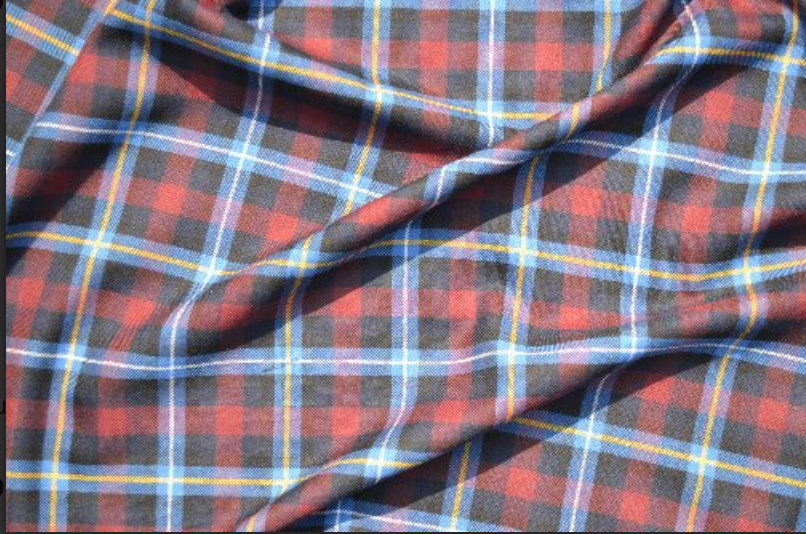
The Dress Act 1746
The Dress Act of 1746 was brought in as part of the Act of Proscription, a series of “King’s Laws” set out in response to the Jacobite risings. In an attempt to bring the warrior clans under government control, many aspects of Gaelic culture were banned, including tartan. The only exception was that the kilt was allowed to be worn in the army, continuing the tradition established by the Black Watch regiment. But aside from this, wearing “the Highland Dress”, which included the Scottish kilt, was illegal in Scotland.
“That from and after the first day of August, One thousand, seven hundred and forty-six, no man or boy within that part of Britain called Scotland, other than such as shall be employed as Officers and Soldiers in His Majesty’s Forces, shall, on any pretext whatever, wear or put on the clothes commonly called Highland clothes (that is to say) the Plaid, Philabeg, or little Kilt, Trowse, Shoulder-belts, or any part whatever of what peculiarly belongs to the Highland Garb;
and that no tartan or party-coloured plaid of stuff shall be used for Great Coats or upper coats, and if any such person shall presume after the said first day of August, to wear or put on the aforesaid garment or any part of them, every such person so offending … For the first offence, shall be liable to be imprisoned for 6 months, and on the second offence, to be transported to any of His Majesty’s plantations beyond the seas, there to remain for the space of seven years.”
Although the law was repealed in 1782, by this time the tartan and the Scottish kilt were no longer ordinary Highland dress, but were adopted instead as the symbolic national dress of Scotland.
Accessories to the Scottish Kilt
The modern, tailored Scottish kilt that is now recognised around the world is traditionally worn with a varying set of accessories. There is also a distinction between the more formal and the more casual of kilts, which are suitable for wear at different kinds of occasions. There are Scots who take the etiquette side of kilt wearing very seriously, and those who just see wearing any tartan as a matter of Celtic pride, so we suggest checking with your host if you are invited to a kilt wearing event for the first time!
- Kilt Hose – These are woollen socks, turned down at the knee and often with garters and flashes
- A Sporran – (Gaelic word for purse) This is a type of pouch, which hangs around the waist from a chain or leather strap. This may be plain or embossed leather, often decorated with fur or metal plating.
- Ghillie Brogues – A style of brogue shoe which has no tongue, to facilitate drying, and long laces that wrap around the leg above the ankle and tie below the calf to facilitate keeping the tie clear of mud. Functional in design, but now mostly only worn for social occasions.
- A Belt – Which is usually leather with an embossed buckle.
- A Kilt Pin – Usually worn on the lower corner of the outer apron of a kilt, preventing the apron from blowing open, by adding extra weight to it, as well as being a form of decoration, sometimes bearing clan symbols.
- A Sgian-dubh – This is the gaelic word for ‘black knife’ and it is a small sheathed knife worn in the top of the kilt hose.
- A Ghillie shirt – an informal traditional shirt, with a criss-crossed lacing up the front which is made of leather.
- Prince Charlie or an Argyll jacket – These jackets are typically reserved for more formal occasions though.
But the basic and most common accessories seen accompanying the Scottish kilt are as follows:
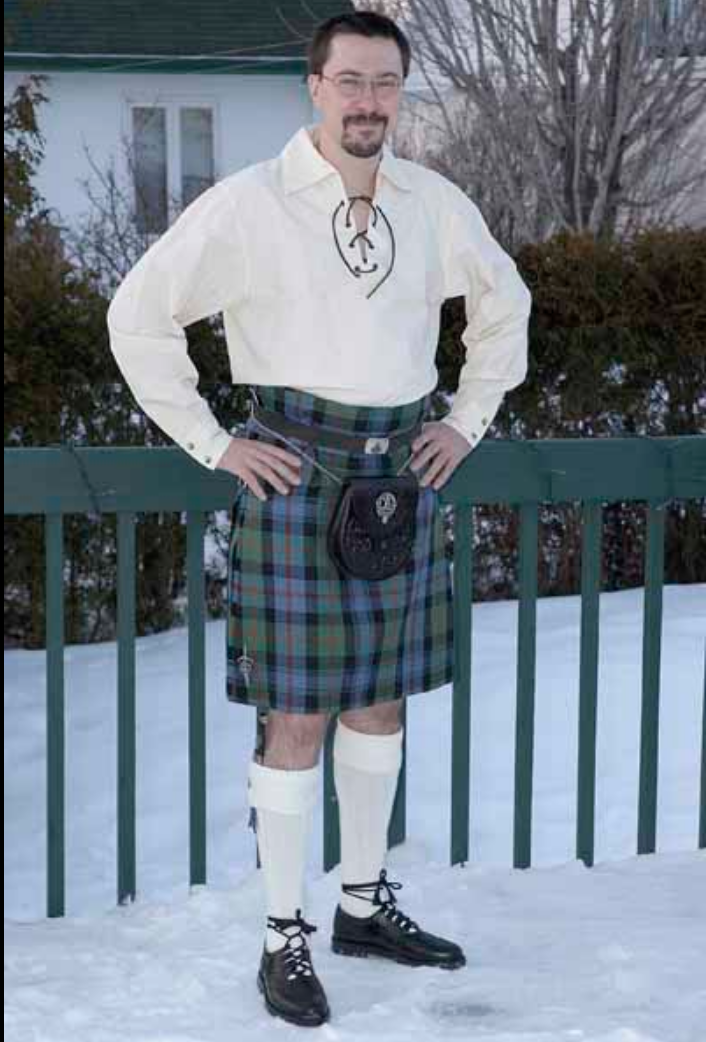
Modern kilts
As well as the traditional Scottish kilt that we all know and love, there are many modern kilt varieties today, making kilts a flexible garment that can be worn for both formal and casual occasions.
If you don’t fancy a tartan kilt, why not try a denim or leather version? Modern kilts are sometimes called utility kilts, and usually come with cargo pockets (which are sometimes detachable) so you don’t need to wear a sporran to carry your essentials.
Modern kilts are also a great choice for sporting events like rugby matches, where you might not necessarily want to wear all the accessories. Whether you go for a causal tartan kilt or a non-traditional fabric, they look great when paired with a rugby top!
Of course, many people still choose to wear more traditional kilts, especially for formal occasions like weddings – but kilts designed from other fabrics offer a different take on piece of Scottish heritage, and are sure to be a talking point wherever you wear yours!
Kilts for weddings
Whether you’re getting married or attending as a guest, kilts are a popular choice for wedding attire.
You can choose any tartan you like (with only a few exceptions of restricted tartans). Maybe you have Scottish family or a Scottish surname, perhaps you feel a particular affinity with a place and want to wear that tartan, or maybe you just like the colour – the choice is yours!
There are several different outfits you can choose from, too. The most formal is the Prince Charlie outfit, which consists of the Prince Charlie jacket and a 3-button waistcoat – essentially, it’s the tuxedo of kilt outfits! The jacket and waistcoat are usually worn in black, with a black bowtie and a white standard or wing collar pleat front shirt.
Often the groom will choose to wear this outfit, but unless it’s a black tie event, guests usually go for something slightly less formal. Many men choose tweed jackets and waistcoats, which can be worn with a tie or a bowtie.
The Highland Titles Traditional Scottish Kilt
The Highland Titles Kilt is hand-tailored by a traditional Kilt maker, and it is reserved for Lairds of the Glen only.
The Highland Titles Kilt is made with a traditional heavyweight (500-515gm/16oz) wool, and it features our very own Highland Titles tartan, woven exclusively for us by Lochcarron of Scotland.
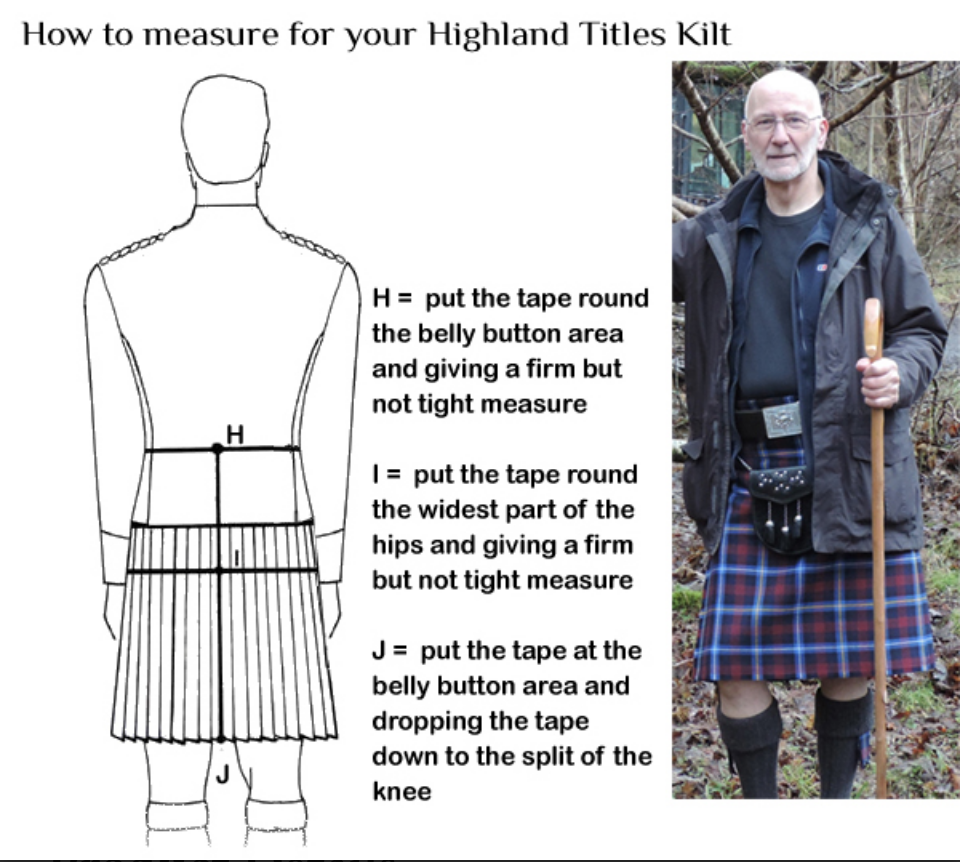
FAQ
Are Scottish Kilts the only kind?
Kilts actually have a long history of being associated with Irish culture too, and whilst there are many differences between the kilts of the 2 countries, both countries wear their kilts as a symbol of pride and celebration of their Celtic heritage.
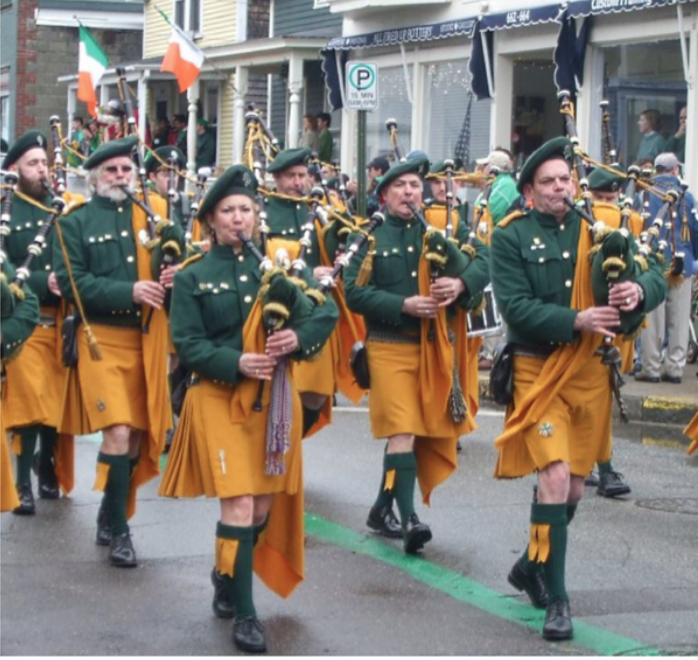
Find out more about the Emerald Isle’s Irish Kilts HERE.
Who started wearing the kilt first: Irish or Scottish?
Kilts were worn in Scotland before Ireland. Scottish kilts date back to the 16th century, while it’s thought that Irish kilts were first worn in the 1850s by Irish nationalists. They then surged in popularity at the end of the 19th and start of the 20th century thanks to the Gaelic Revival, a resurgence of interest in the Irish language and culture in the country.
Can anyone wear a Scottish Kilt?
Short answer- yes! Anyone can wear a kilt. Generally, there are no restrictions on wearing most tartans, with the exception of a few rare patterns which are known as ‘restricted’, meaning they are reserved for some chiefs or the Royal Family. If you cannot find a tartan associated with your family name, why not try a Scottish kilt made from one of the universal tartans’? These include the Royal and Hunting Stewart Tartans, Black Watch, Flower of Scotland and many more.
How much material is needed for a great Scottish kilt?
It depends on your size, but kilts are usually made from eight yards of a single-width cloth. If you’re bigger, then your kilt may be made from nine yards, and if you’re a smaller size, you may need slightly less fabric.
What is worn under the Scottish kilt?
Let’s face it- this is the first question that most of us think of when we see a gentleman in a kilt, isn’t it?! Well, it is true that it is a Scottish tradition to not wear any undergarments underneath a Scottish kilt.
One rumour is that the Scottish military code from the 18th century prescribed a kilt but did not mention underwear. Scottish soldiers being typical Scots took this as a challenge rather than accept it was an oversight, and so the underwear-less tradition began! It is believed that this is where terms like “going regimental”, “military practice”, and “going commando” evolved from to describe wearing no underwear!
In the modern day practice of wearing kilts it does seem to be very much a personal preference. In some formal situations underwear is definitely required, and most kilt rental companies will stipulate that customers wear underwear for hygiene purposes. The Scottish Official Board of Highland Dancing has also made underwear part of the dress code- which is logical when you see some of the high kicks involved in Highland dancing!
So the answer to the question- it’s still a mystery!
Brought to you by Highland Titles
Highland Titles mission is to conserve Scotland, one square foot at a time™. By selling souvenir plots of land, we are funding our Nature Reserves and conservation projects.
What you should do next...
- Browse our plots to claim your title of Lord or Lady of the Glen
- Discover the masjetic Kilnaish Estate
- View our fun gifts and accessories, inspired by the Scottish Highlands